Quan Am Pagoda: A great spiritual site in Ho Chi Minh City
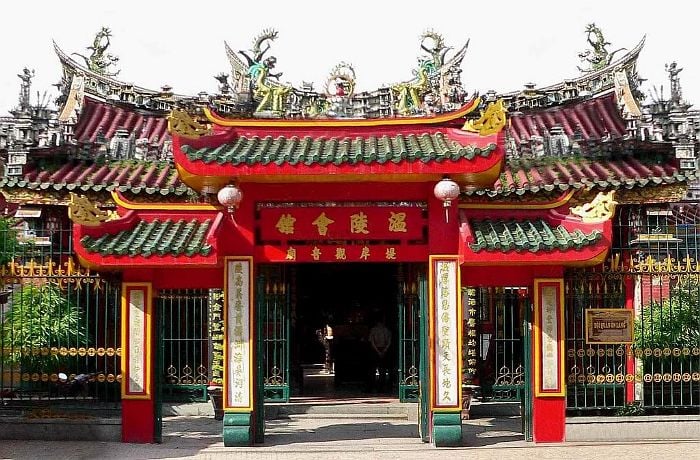
Quan Am Pagoda is one of the most beautiful and ancient Chinese pagodas in Vietnam. This is a place of worship for both Vietnamese and Chinese Buddhists and has elements of Taoism and folk religion. With beautiful architecture and being a witness to the city’s history, Quan Am Pagoda is a must-visit tourist attraction when visiting Ho Chi Minh City.
Mục Lục
1. Quan Am Pagoda (On Lang Pagoda): Address, opening hours
- Location
Quan Am Pagoda is located on a tiny street in Cholon (Ho Chi Minh Chinatown), carefully hidden in between small streets and food stalls.
Specific address: 12 Lao Tu Street, Ward 11, District 5, Ho Chi Minh City
- Features
Quan Am Pagoda extends to a complex including a courtyard, an artificial pond, a garden, and the main altar for the worship of Quan Am (Guanyin). Highlights of the pagoda include delicate wood carvings, including panels, parallel sentences, dragon pillars, ornaments made from broken pieces of ceramic and ancient bells. This place also worships a large number of deities, Gods in Chinese folk religion, Taoism, and Buddhism. As is common in most pagodas, the air is thick with the smell of incense floating through each corner, which makes for a perfect and serene setting.
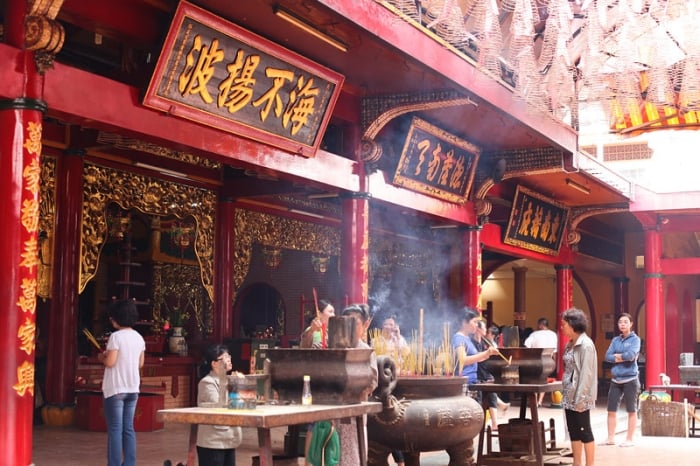
- Directions
The Quan Am Pagoda is situated in Cholon, which is on the western bank of the Saigon River, just 6 km from district 1 and 8 km from Ho Chi Minh City center. Hence, the pagoda can easily be reached by taxis or motorbike taxis. You can also travel by boat along the Ben Nghe Channel and the Saigon River.
Alternatively, those choosing to arrive here by bus can take bus numbers 6, 7, 8, 17, 54, 56, 62, 68, 139, or 150 to the Cho Ray hospital bus station. From there, your destination is only a short stroll away. Visitors should notice that every 15 minutes from 5 am to 8:30 pm every day, buses are scheduled to leave from the spiritual construction (District 1) and arrive at Cho Lon station. The fare will be about $0.3, the cheapest one in all means of transportation.

- Opening hours: 6:15 am – 5 pm daily
2. The history of Quan Am Pagoda in Ho Chi Minh City
The Quan Am Pagoda was established in 1740 by the Chinese people who migrated to Vietnam. This pagoda in Ho Chi Minh City began as a gathering place for Chinese people to discuss public affairs, help one another, worship gods, and meet their spiritual and cultural demands. Therefore, it was first called the On Lang Assembly Hall (On Lang is a town in Fujian Province, China). This place got the name “Quan Am Pagoda” after they began to worship Quan Am here.
The pagoda went through many restorations in 1828, 1867–1869, 1897, 1993, and 1995. On December 30, 2002, Quan Am Pagoda was recognized as a National Architectural Site.
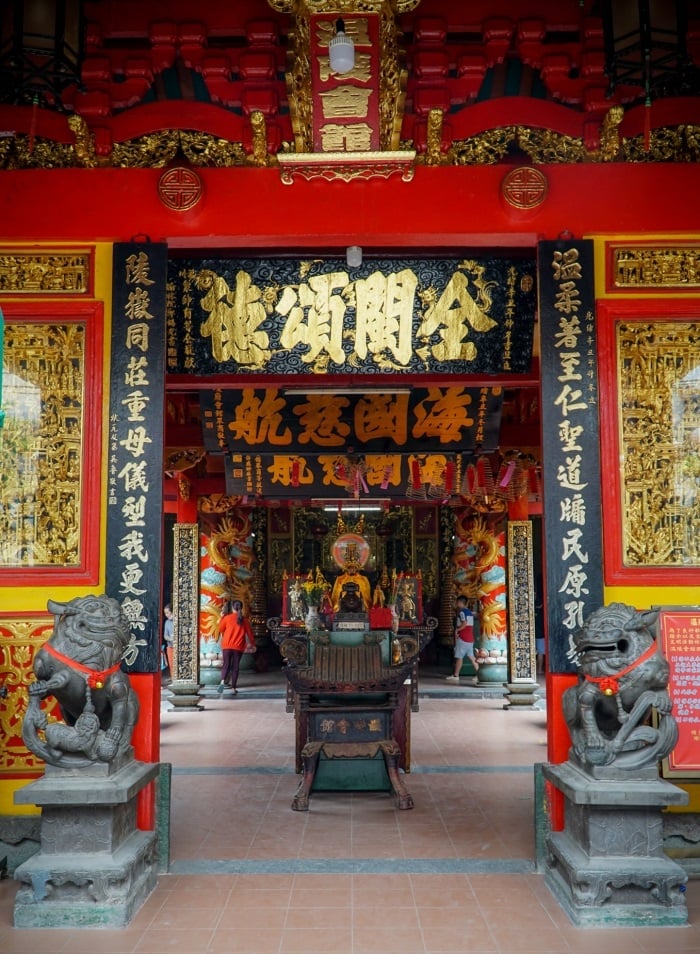
>>> Visit Jade Emperor Pagoda – another famous pagoda in Ho Chi Minh City!
3. Admire the architecture of Quan Am Pagoda Saigon
3.1. Outside the pagoda
The pagoda’s site is crossed by Lao Tu Street. On one side of the street, they built a main gate, a small front yard, and halls for worship. The worship area of Quan Am Pagoda can be divided into a front hall, a left hall, a right hall, a back hall, and a sky well. On the other side, they construct a lake there to release fish.
Inspired by Chinese temples and pagodas built in the 19th century, this pagoda in Saigon has red pillars, roofs, signboards, walls, and ornaments. At this place, carved wood pillars, panels, and ornaments are abundant. The most striking features of the pagoda are its stunning embellishments, which are coated in ceramic shards.
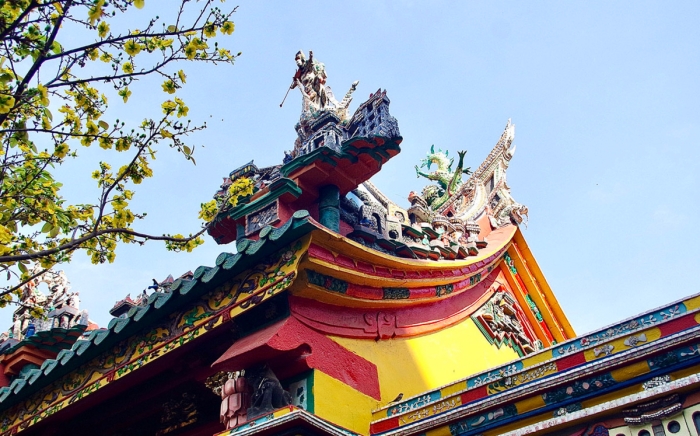
3.2. Inside the pagoda
Inside the Quan Am Pagoda in Ho Chi Minh City, there is a unique combination of many subjects, from sculpture and decoration to painting. The pagoda has so many altars and worshiping statues that are colored and decorated quite similarly to those in the Thien Hau temple. The personality and charisma of the saints are shown through each facial expression and figure thanks to the artists’ excellent workmanship.
In addition, there are two types of wooden reliefs, richly carved and embossed, painted with gilded lacquer to create a splendid look. The embossing technique is especially visible through the roof, the top of the trap, or the porch with the mascots such as dragons, unicorns, turtles, phoenixes, and Chinese legends.
4. Explore the traditional rituals of Quan Am Pagoda
One of the most unique and interesting rituals in On Lang Pagoda is the custom of “beating the villains.” According to the rituals, people who come to worship will use their shoes to repeatedly hit the paper dolls, which are symbols for the villains, to prevent them from harming people.
This traditional ritual takes place in front of the Tiger altar on March 5th and 6th of the solar calendar every year. The main side of the altar is set up with a chunk of raw pork. Besides, there will be even-numbered tangerines and dumplings printed with red Chinese words like Phuoc( fortune) and Dai Phat (prosperous) as offerings around the worship area.
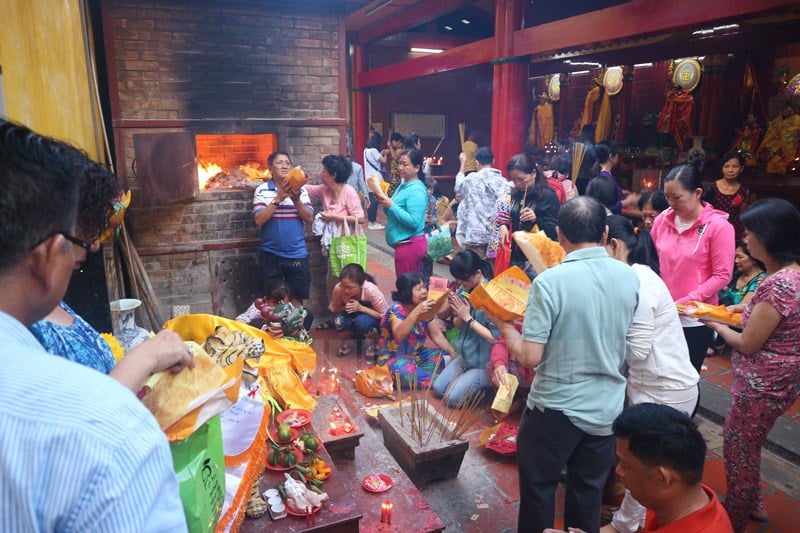
Additionally, On Lang Pagoda in Ho Chi Minh City also has a reputation for its ceremony to pray for love. When coming here to pray for love, besides the flowers, incense, candles, fruits, and sweets, visitors need to buy red thread rolls, on top of which are pre-threaded needles, which are then placed at the altar of Lady Hoa Phan (the goddess of beauty and love) to pray to the gods.

Aside from Quan Am Pagoda, there are innumerable other must-visit tourist destinations in Ho Chi Minh City, such as Saigon Notre Dame Cathedral, Independence Palace, Landmark 81 Vietnam, Jade Emperor Pagoda, War Remnants Museum, and Bui Vien Walking Street.
Along with Ho Chi Minh City, Phu Quoc, Nha Trang, Hoi An, and Da Nang are among the top renowned tourist attractions in Vietnam that you should not ignore. Do not forget to plan where you will stay in advance for each destination in Vietnam that you wish to visit to enjoy the finest experience.
It is recommended that you reserve a room at the hotel and resort system of Vinpearl, which is the top-rated brand of accommodation with high-class services in Vietnam. Vinpearl offers you a luxurious stay, full amenities, and a plethora of alluring services like swimming pools, bars, restaurants, entertainment areas, etc. Additionally, Vinpearl is also present in most tourist attractions in Vietnam:
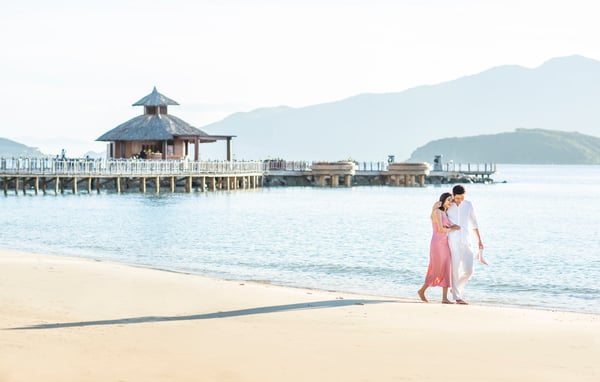
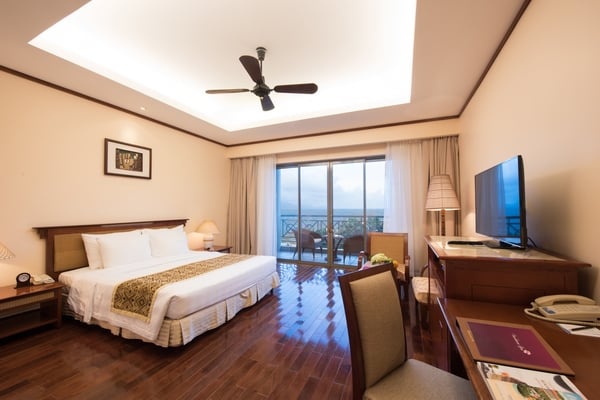
>>> Book rooms in Vinpearl Phu Quoc, Vinpearl Nha Trang, Vinpearl Hoi An, and Vinpearl Da Nang for the best Vietnam trip you have ever had!
Quan Am Pagoda can offer unforgettable travel experiences for any visitor. There are a million locals and tourists coming here to enjoy the beauty of the pagoda’s architecture and burn incense to pray for happiness. Do not hesitate to visit this ancient pagoda to worship, explore, and sightsee, aside from the many other interesting places waiting for you to discover in Vietnam.
>>> Book rooms in Vinpearl Phu Quoc, Vinpearl Nha Trang, Vinpearl Hoi An, and Vinpearl Da Nang to stay in comfortable accommodations while visiting Vietnam!
>>> Book voucher, combo, tour to Phu Quoc, Nha Trang, Hoi An, and Da Nang to grab the best deals and enjoy numerous memorable experiences with your loved ones in Vietnam!






